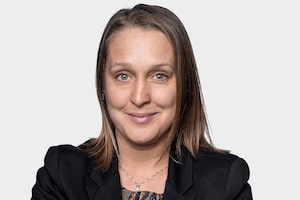Emergency fund.
A job loss, a sudden illness, a leaky basement. No one expects these things to happen to them but the reality is that they can.
That's why an emergency savings fund – money set aside to cover unforeseen and hopefully non-recurring expenses like the ones above – is essential. Financial planners say individuals or households should set aside between three and six months of their income, which would allow them to weather a stretch of trouble without permanent financial damage.
A survey released Wednesday by Bank of Montreal found that 54 per cent of Canadians have more than three months of savings available, while 49 per cent "have access to" more than $5,000, if needed.
Two-thirds of those polled said they feel ready to withstand a financial emergency this year, up from 40 per cent in 2011. However, one-third feel unprepared for a financial downturn, and 19 per cent said they would deplete their savings in less than a month.
The online survey, conducted by Pollara early in August, asked 1,000 Canadians how prepared they are for an event like a change in job status, a change in their financial situation or another unforeseen emergency. The survey also asked how long they could weather the tough times and what sources of contingency savings they had available to them.
When asked what their fallback plan would be, should they find themselves without a source of income or finances for six months, 45 per cent of those surveyed said they would rely on financial support from family and friends. Other responses included selling assets, relying on a line of credit or RRSPs.
Tina Tehranchian, a certified financial planner with Assante Capital Management Ltd. in Toronto, says most of the people she sees don't have even the bare minimum three months' savings set aside, which she describes as a big mistake.
"An emergency fund is the base of the financial planning pyramid," she says in an interview. "You need to be able to access this kind of money. You can plan for retirement or sending your kid to college, but not for this."
In an ideal situation, the three to six months of savings should be available in cash, according to Ms. Tehranchian. Failing that, people should have a home equity line of credit to tap into. "It is important that this money be liquid and accessible. This should be a huge financial priority," she says.
The BMO survey found that Canadians hold their emergency finds in savings accounts, high-interest savings accounts, in investments outside of a registered plan and in tax-free savings accounts.
Albertans were most prepared to handle a financial "rainy day," at 79 per cent, while Quebeckers were least prepared, at 44 per cent.
Among higher-income households, defined as those earning more than $100,000 a year, 25 per cent feel "unprepared" for a financial emergency and 31 per cent would be unable to survive more than three months using their rainy day fund.
The release noted that according to BMO Economics, the personal savings rate in Canada has dropped to near historic lows of 2.9 per cent. That is down from a recent high of 20 per cent in the early 1980s.
 Roma Luciw
Roma Luciw